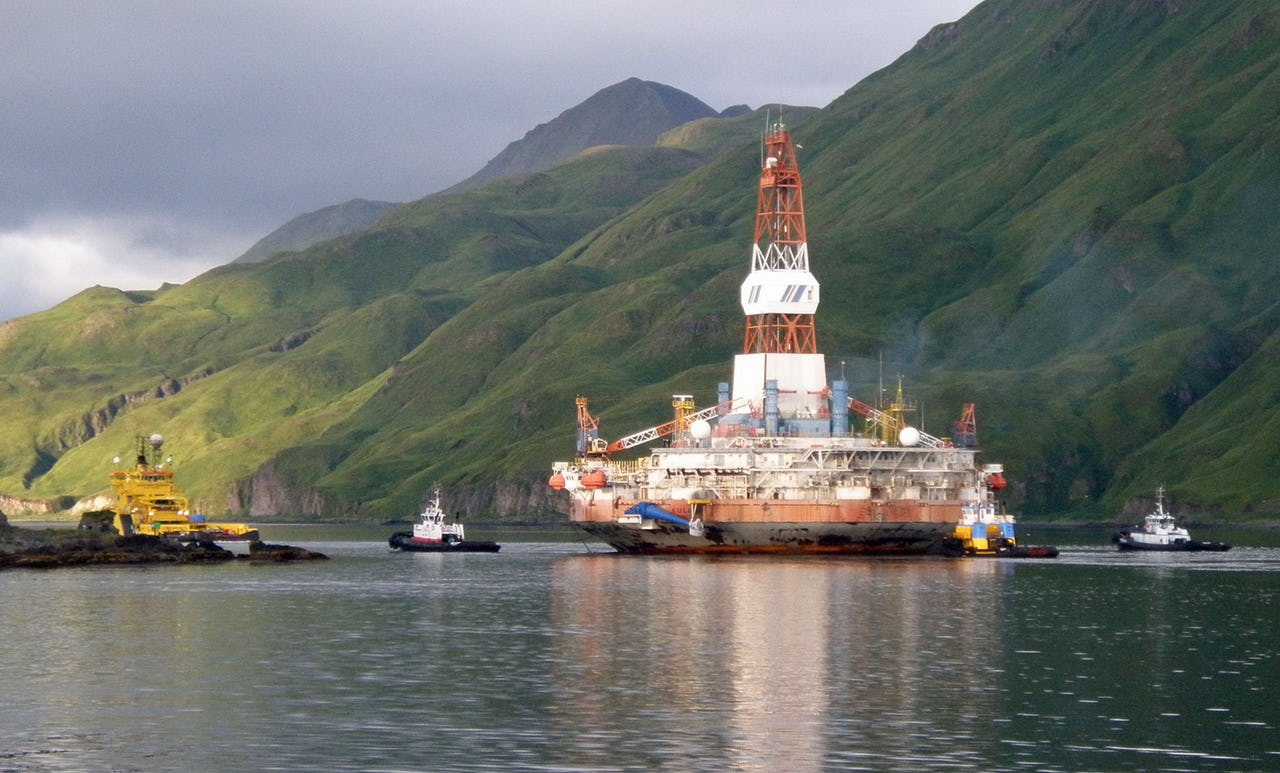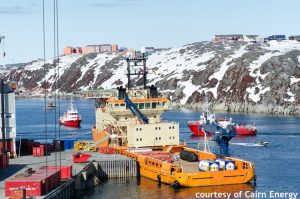Developing North American Arctic Offshore Oil and Gas: A Comparative Study - Part 1

Shell oil drilling platform. Photo: Tom Doyle
Achieving a balance between preservation and development dominates most of the current Arctic debate. In this balance, the continued push for oil and gas exploration seems to be the most contentious interest, as it pits environmental concerns against economic interests. The decision of whether or not to develop new offshore areas for prospecting therefore encompasses not only energy issues, but also how the development of economic interests will affect indigenous people, the marine environment, regional development, climate change, and energy security.
The most common explanations for increased interest in Arctic energy development in recent years include rising commodity prices, new technologies enabling cheaper Arctic operations, and increased accessibility due to the melting of the Arctic sea ice. Additional motivation for Arctic oil and gas endeavors has come from the depletion of more southern oil and gas fields in Alaska, Norway and Russia, and the mention of promising Arctic resource potential in the 2008 United States Geological Survey report.1)
While these factors set the background for increased commercial interest in the region, they do not provide a complete picture. The decision of how and when to open up new Arctic offshore areas for prospecting and exploratory drillings is arguably as much a consequence of the relationship between the local and the federal government, as it is related to commercial interests. Since the final decision to allow exploratory drillings lies with the respective federal and regional governments, understanding the internal processes of opening up new offshore leases is crucial to understanding Arctic oil and gas development.
North American Offshore Development
Of particular interest is offshore development in North America, as this Arctic region has seen the most rapid changes in terms of opening up for exploratory drillings in coastal waters. On the other side of the North Pole, in North Norway and Northwest Russia, offshore oil and gas fields have already been under development for decades, while off the coasts of Greenland, Alaska and the Canadian Arctic, the development processes have only recently begun to generate results.
Relatively high oil prices at the end of the 1970s coupled with generous subsidies from the federal governments in D.C. and Ottawa led to multiple oil and gas companies conducting Arctic offshore exploratory drillings in the early 1980s. These were mainly concentrated on the Chukchi and Beaufort Seas in the US, and in the Beaufort Sea and the Mackenzie Delta in Canada. As oil prices fell, the findings did not warrant further commercial development and were abandoned. The recent spike in commodity prices worldwide, in addition to new technology and melting sea ice, has resulted in renewed commercial interest in these areas. Greenlandic aspirations for economic independence have led to new exploration of the resource potential in the waters around Greenland. Consequently, there are now development plans for petroleum activity in all of the three North American Arctic territories.
Scottish Cairn Energy conducted exploratory drillings at several sites in the summers of 2010 and 2011 off the coast of Greenland. Although no big findings were reported, both the Greenlandic government and heavily invested oil companies like Statoil, Shell, and Husky are intent on commencing further exploratory drillings after more seismic studies have been conducted in 2012 and 2013.2)
Shell has also been working to get their exploratory drilling plans in the Chukchi and Beaufort Seas north of Alaska approved for the 2012 summer season. They were already prepared to begin exploration in 2011, but lack of permits and aggressive civic involvement has caused numerous delays. Barring further complications and lawsuits, Shell plans to start drilling in mid-July. However, on the May 16 Earthjustice, an environmental NGO, filed another lawsuit against the US Environmental Protection Agency (EPA) on behalf on several interest groups, challenging the permits acquired by Shell.3) Whether drilling will start up this summer remains to be seen.
The Canadian offshore Arctic is the least-developed North American territory in terms of offshore oil and gas, although there have been plenty of lease sales for the Canadian Beaufort Sea.4) The government does expect exploratory drilling applications from companies like BP, Imperial, and Exxon Mobile in the near future, after the recent release of an Arctic Offshore Oil and Gas Review provided the framework for reviewing such applications from the oil companies.5)
Due to these project plans, it seems likely that, in a few years time, exploratory offshore drillings will have been conducted in all of the three North American Arctic territories. By then large commercially viable fields might have been discovered, with the debate on balancing economic interests with environmental concerns likely to increase even further.
Explanatory Factors
There is no streamlined pan-Arctic protocol for opening up new oil and gas fields. The practices and inter-institutional processes vary as much as the states themselves. Some aspects of traditional public policy studies can, however, provide a conceptual framework for how to understand these processes. Some political scientists argue strongly for the role and influence of institutions in the decision-making process, as they provide the legal and behavioral framework in which the decisions are made. Simplified, the decision to open up a new field for lease sales is the result of the intra-institutional set-up and processes inside the bodies empowered with the ability to make such a decision.6)
Others emphasize that it is not the institutions that matter, but the actors around these institutions and the societal environment in which the decision is taking place. The interactions and relations between policy makers, politicians, companies and NGOs dominate the policy outcome, and decisions are made to appease specific interests amongst, for example, companies and regional governments.7)
The truth, as often is the case, lies somewhere in between these two explanations. However, based on specific case studies of the opening up of Arctic offshore fields in North America, there are arguably some dominant factors that determine the pace of the offshore development in each region. These will be outlined and used to compare specific regional development processes in the next part of this article.
The article is based on an ongoing study that the author is conducting within the international research programme Geopolitics in the High North. Part 2 can be read here.
References
